BRITISH DEFENCE MINISTRY DOCUMENT REVEALS SKRIPAL BLOOD EVIDENCE IS MISSING – FAKE CHAIN OF CUSTODY MAKES NOVICHOK EVIDENCE WORTHLESS
by John Helmer - Dancing with Bears
December 6, 2019
A British Ministry of Defence document, issued on March 12 but unnoticed since then, reports the ministry has searched its files and records of the blood sampling and testing for Novichok in the blood of Sergei and Yulia Skripal, but “failed to locate any information that provides the exact time that the samples were collected.”
The Ministry of Defence (MOD) is the parent organization for the Defence Science and Technology Laboratory (DSTL), the UK’s chemical warfare centre at Porton Down. Porton Down, as the laboratory is usually known, is the source of British evidence that Novichok was detected in the bloodstreams of the two Skripals.
Two officials of the DSTL laboratory testified on oath in the London Court of Protection in March of 2018, one identifying himself to the court as a “Porton Down Chemical and Biological Analyst” and the other, a “Porton Down Scientific Adviser”. According to the court record published on March 22, 2018, “blood samples from Sergei Skripal and Yulia Skripal were analysed and the findings indicated exposure to a nerve agent or related compound. The samples tested positive for the presence of a Novichok class nerve agent or closely related agent.” The presiding judge, Justice David Williams, ruled that “tests carried out by Defence Science and Technology Laboratory at Porton Down concluded that they had been exposed to a nerve agent.”
National Health Service (NHS) hospital manuals, English nursing sources and biochemists all say it is impossible for patient blood samples to lack precise date and time data. The Skripal samples with these data are therefore missing, while the samples analyzed by Porton Down aren’t provably from the Skripals at all.
If the Defence Ministry is telling the truth, its admission that it “failed to locate” the required blood specimen logs means there is no legal chain of custody for the evidence the British Government has publicly alleged, identifying a Russian nerve agent called Novichok, and Russian military personnel and the Kremlin as responsible for attacking the Skripals in Salisbury on March 4, 2018. Without this chain of custody, no British court can lawfully admit the prosecution’s evidence to support the government charges in the Skripal case. The Wiltshire coroner’s inquest into the death of Dawn Sturgess, also alleged to have resulted from a Russian Novichok attack, will be unable, lawfully, to admit the alleged evidence.
If the ministry is lying in its March 12, 2019, document, this demonstrates the collapse of the British government’s Novichok narrative into evidence of a political frame-up.
The MOD official, who signed the document as Mrs S. Gardiner, head of the ministry’s Information Rights Team, was asked to clarify her report. She has refused to reply.
The Skripal incident occurred just after 4 in the afternoon in the Salisbury city centre on March 4, 2018. The details can be followed in this story archive. Both Sergei Skripal and his daughter Yulia have recovered; their whereabouts remain secret; they have not appeared in a British court nor have they given direct personal testimony about what happened to them. Yulia Skripal’s brief appearance before Reuters on May 23, 2018, was staged.
Left to right: Yulia Skripal interviewed by Reuters, May 23, 2018;
Dawn Sturgess; Charles Rowley.
The location of Yulia Skripal's interview has been identified as an airbase in Gloucestershire owned by the Ministry of Defence and controlled by the United States Air Force (USAF). The base, RAF Fairford, has been operated by the US since 1953, and was rebuilt by the USAF between 2000 and 2002 for long-range bomber operations. Its last B-52 operation was in March of this year. A B-2 bomber operation was reported by a local newspaper in September. The base is currently being upgraded for operation of USAF aerial surveillance against Russia and future deployment of US bombers. For details: https://en.wikipedia.org/wiki/RAF_Fairford The location of Skripal's interview, according to a local spotter, was in base parkland on the corner of Maine Street and Alaska Avenue. The location and use of New York-based Reuters, not the BBC, indicate that the Skripals are under US control. For more on Reuters as a New York-based war propaganda unit, read this.
The Sturgess incident occurred in a private home in Amesbury, nine miles from Salisbury, on June 30, 2018. Dawn Sturgess died on July 8; her partner, Charles Rowley, recovered. In a statement to parliament by then-Prime Minister Theresa May on September 5, 2018, she claimed “hard evidence has enabled the independent Crown Prosecution Service to conclude they have a sufficient basis on which to bring charges against these two men [alleged Russian military officers] for the attack in Salisbury. The same two men are now also the prime suspects in the case of Dawn Sturgess and Charlie Rowley too. There is no other line of inquiry beyond this. And the police have today formally linked the attack on the Skripals and the events in Amesbury – such that it now forms one investigation.” The Sturgess archive overlaps with the Skripal one.
On December 16, 2018, an acquaintance of the Sturgess family filed a Freedom of Information (FOI) request to the Ministry of Defence (MOD) in London. Among other things, he asked for identification of the source and date of the Skripal blood samples. Although the requester was connected to the Sturgess family, his application to the ministry expressly referred to the Skripal case. On January 16, 2019, the ministry responded with internet links to publicly released statements regarding MOD’s involvement in the investigation of “the incident at Salisbury”; that’s to say, the Skripal incident.
The text of the Ministry’s letter from which this quote comes is a public document, and can be read here.
Source: https://www.whatdotheyknow.com/
This reveals that the ministry conducted a further two-month review of the official case records. The report of this was dated March 12, 2019, and signed by the head of the FOI office at the ministry, Mrs S. Gardiner. Her name and position have been verified by telephone to her department, and from other public releases. Gardiner has been contacted at her official email address.
Gardiner’s report depends on the Protection Court ruling by Justice Williams, but Gardiner also added a detail from one of the Porton Down witnesses in court not mentioned by the judge, nor released before. As Gardiner’s document acknowledges, the Ministry of Defence has “located” – Gardiner’s term — the Porton Down witness statements, and the blood specimen records the witnesses had analysed at Porton Down.
The second point is the new disclosure. It reveals Yulia Skripal was admitted to Salisbury Hospital before her father because her patient admission number PTN/18/0010 precedes his, PTN/18/0012. PTN stands for Patient Number; because the numbers are not sequential, the hospital must have admitted another patient in the interval between the separate ambulance arrivals of the Skripals.
The courtroom testimony of the Porton Down analyst was that “blood samples” were collected from the Skripals after their admission. Note the term used is plural. In fact, blood samples, plural, were taken from each of the Skripals several times after their admission. This is confirmed by medical specialists as standard practice in cases of similar presenting symptoms.
“If a nerve agent that could possibly have been an organophosphate was suspected,” commented a biochemist, “and we know from hospital staff comments to the press that it was, or even if that needed to be eliminated, then blood would be sampled and tested for acetylcholine esterase [ACE] levels.”
An independent source adds:
“The early reports were that on the Sunday evening [March 4, 2018], just by chance, there were two clinicians off duty at Salisbury District Hospital [SDH]. They had just finished their part of Operation Toxic Dagger [MOD annual chemical warfare exercise]. Apparently, they recognised the two Skripals were, or could be victims of nerve agent poisoning; their intervention in alerting staff as to treatment saved the Skripals.”
The medical implications of this are well-known, according to the biochemist. “When ACE levels are found to be dangerously low, then therapy begins. What is vital is that ACE levels continue to be monitored to show recovery, and that means a blood sample every 4 hours would be quite reasonable.”
The count of how many blood samples were taken by hospital staff may have been revealed in the Protection Court witness testimony; if so, the evidence has been kept secret. Also secret are the dates and times of each of the samples.
Justice Williams acknowledged in his judgement that frequent blood sampling was the practice applied to the Skripals.
“There is currently in place a cannula”, he wrote, “from which the samples will be drawn by [Salisbury Hospital] Trust staff, under observation by an OPCW observer and another NHS consultant.” Intravenous cannulation is standard procedure at NHS hospitals, with 4-hour interval operations the norm, particularly for patients like the Skripals whom Williams reported as “unconscious…heavily sedated…unable to communicate in any way”.
The judge’s language also demonstrates the effort intended by the Organisation for the Prohibition of Chemical Weapons (OPCW), and the hospital to ensure strict chain of custody between the drawing of the Skripals’ blood, the labeling of the specimens, and the transportation of the evidence to the testing laboratory. With certainty for clinical and forensic purposes, labeling meant name, date of birth or other official identifier, date and time of blood sampling.
The Gardiner report from the Ministry of Defence (MOD) does not claim the date and time data are classified secrets which cannot be disclosed for national security, patient privacy or other reasons. Instead, Gardiner’s March 12 document claims the MOD was unable to locate the sample records — as if they don’t exist at all.
Source: https://www.whatdotheyknow.com/
Date and time data for blood sampling are required throughout the NHS system. British nursing sources have confirmed the manual for blood testing at Salisbury Hospital requires recording the date and time for each blood sampling on the specimen tube containing the blood, on the sampling request form, and on the patient’s file.
“16. Manual Specimen Labeling 16.1 At the patient’s side label the tube with:- Surname/Family name First/given name Date of Birth Unique numeric identifier e.g. Hospital or NHS No. (essential for Blood Transfusion – use both if stated on request form) Patient location Date taken & your initials o Add the date and time taken on the request form.”
This manual excerpt was sent to Gardiner at the Ministry. She was asked to “clarify how it is possible that standard practice was not followed in the case of the Skripals to the extent that your ‘searches’ failed to identify ‘the exact time that the samples were collected.’” Gardiner refuses to reply.
Gardiner has reported a “timeline” between the admission of the Skripals to hospital and the arrival of their blood samples at Porton Down. Although the admission times for Yulia and Sergei Skripal were recorded by the hospital, and are likely to have been around 1700 on March 4, this isn’t revealed in the Ministry report. However, the arrival of the blood samples at Porton Down is noted as 1845 on Monday, March 5. This indicates that MOD has a time and date stamped receipt for blood samples for Sergei and Yulia Skripal.
Gatehouse at the entrance to Porton Down at which all
entries and exits are recorded by MOD staff.
The precision of the time suggests there is more, including the names for each blood specimen, and the date and time at which the blood was taken.
Which of the several Skripal blood samples was delivered to Porton Down? For there to be a lawful chain of custody the Porton Down receipt data should match the hospital’s patient blood records. There must have been a hospital sign-out paper; plus a courier identification for the pick-up, and then the hand-over at Porton Down. If these data are missing from the 1845 receipt, then it’s possible the blood received didn’t come from the hospital — or from the Skripals at all.
Independent evidence indicates that a police car or a medical emergency vehicle with police escort would have taken between 10 and 15 minutes to reach the defence laboratory from the hospital. This means the last possible sampling of the Skripals and dispatch would have occurred at about 1800. Between the first blood testing on their admission and the dispatch of the samples to Porton Down, approximately 25 hours had elapsed. In that interval, medical experts believe the standard diagnostic and treatment practice would have required six rounds of blood tests, and the series carefully recorded for changes in the ACE levels.
Gardiner was asked for the MOD’s record of how many blood samples her searches had identified over the time range she reported – “at some point between 1615 on 4 March 2018 and 1845 on 5 March 2018”. Gardiner has not answered.
Medical and forensic sources believe it is impossible for there not to have been multiple blood samples for both Skripals – possibly as many as six in the first 24 hours after their hospital admission. The sources also believe it is impossible for MOD searches to have “failed to locate any information that provides the exact time that the samples were collected.” A medical source comments: “it’s obvious the Skripals were treated with an antidote, and equally obviously they recovered. So their progress must have required frequent blood sampling.”
If Gardiner’s report of March 12 is true, then this is MOD’s official admission there is no chain of custody for the blood samples on which the Novichok allegation has been based. If Gardiner is lying, then the ministry’s reason is obvious: the samples which were taken from the Skripals in Salisbury Hospital did not reveal that their blood was contaminated by what Porton Down and Prime Minister May later claimed was Novichok.
The Defence Ministry document also casts doubt on the forensic value of the blood sampling and testing by the Organisation for the Prohibition of Chemical Weapons (OPCW) in The Netherlands. The London court record made by Justice Williams shows the UK Home Office applied to the court on March 20 for a ruling to allow OPCW personnel to collect “fresh blood samples” from the Skripals in order to “conduct DNA analysis to confirm the samples originally tested by Porton Down are from Mr and Ms Skripal… Analyse the medical records of Mr and Ms Skripal setting out their treatment since 4 March 2018… Re-test the samples already analysed by Porton Down.”
Williams concluded his orders with a declaration “that it is lawful for Salisbury NHS Trust to take blood samples for provision to OPCW and to provide copies of medical notes to OPCW.” In other words, the records MOD now claims it cannot find were provided to the OPCW between March 21 and 23. By then, the chemical agent to which the Skripals had been exposed on March 4 had been decomposing in their blood for almost three weeks.
British sources believe it is impossible for the OPCW to have received the Skripal “medical notes” without the MOD having a duplicate record.
The OPCW technical report of what it did at the hospital, and subsequently, was published on April 12, 2018.
Source: https://www.opcw.org/
This report acknowledges that information was provided “on their acetylcholinesterase status since hospitalisation, as well as information on the treatment regime.” Also, “the team was briefed on the identity of the toxic chemical identified by the United Kingdom and was able to review analytical results and data from chemical analysis of biomedical samples collected by the British authorities from the affected individuals, as well as from environmental samples collected on site.” ‘Briefed’ and “able to review” means listen to and read data presentations. It doesn’t mean direct testing by the OPCW personnel of the original blood samples themselves.
Justice Williams had ordered the OPCW to “re-test the samples already analysed by Porton Down”. The OPCW does not report doing so. No chain of custody exists between the two; there is only hearsay.
According to the OPCW, transfer of the blood samples, transportation of the specimens, and delivery to the OPCW’s testing laboratories were guarded forensically.
“The team was able to collect blood samples from the three [including local policeman Nick Bailey] affected individuals under full chain of custody [emphasis added] for delivery to the OPCW Laboratory and subsequent analysis by OPCW designated laboratories, and conducted identification of the three individuals against official photo-ID documents.”
The MOD report implies that by comparison, no “full chain of custody” protected the blood samples analyzed by Porton Down, before the OPCW arrived. If that’s the case, then the briefing and data presentation Porton Down officials gave the OPCW team is hearsay, juridically worthless. This means that between the samples OPCW collected from the Skripals on or about March 23 and the samples the hospital obtained on March 4 and 5, no comparison is valid and admissible in a criminal proceeding or inquest; or a comparison with the samples Porton Down says it examined between the evening of March 5 and the announcement of Porton Down’s findings on the morning of March 6.
There is only the Prime Minister’s say-so on September 5, 2018, that the comparison confirms Novichok poisoning. However, the Defence Ministry’s say-so on March 12, 2019, is that it cannot “locate” the sampling records. If the latter is false, the former is bound to be.
British experts say they are not confident to predict how long the alleged Novichok organophosphate compound remains in the human bloodstream before decomposition. Depending on the dose and form of exposure, there is more confidence in claiming that decomposition is a matter of weeks. According to the OCPW report, however, its team found in the Skripal samples “the toxic chemical was of high purity. The latter is concluded from the almost complete absence of impurities.” The OPCW samples were almost three weeks old, and they were drawn after intravenous administration of antidotes over roughly the same period.
In a second paper, issued on September 4, 2018, the OPCW reported on “biomedical sampling” of Sturgess and Rowley between July 15 and 18. This was more than two weeks after their June 30 exposure; more than a week after Sturgess had died. OPCW personnel attended the autopsy, the report says, and obtained tissue samples from Sturgess, not blood. Rowley provided blood.
Source: https://www.opcw.org/
The OPCW has reported publicly on the toxic chemical in the post-mortem for Dawn Sturgess. The Wiltshire coroner responsible for holding an inquest into Sturgess’s death refuses to do as much. He continues to delay his examination of the cause of death; for details, read this.
Says the OPCW, the British authorities also provided “a sample of the contents of a small bottle that the police seized as a suspect item from the house of Charles Rowley in Amesbury.” The OPCW makes no claim this was provided under full chain of custody. In fact, there was no police “seizure”, nor was the bottle found on June 30, when Sturgess and Rowley were allegedly first exposed to it. The official records show the police did not find the bottle – allegedly in a garbage bag in Rowley’s kitchen – until July 11; that’s twelve days after the incident, three days after Sturgess’s death. For details, read this.
Chain of custody is a phrase which does not appear in the second OPCW report. Tests of the bottle contents, according to the OPCW, “show that the sample consists of the toxic chemical at a concentration of 97-98%. The sample is therefore considered a neat agent of high purity.” No report of purity or concentration is provided for Sturgess’s tissue or Rowley’s blood.
Notwithstanding, the OPCW concluded in its published paper that on the evidence of the second case, it “is the same toxic chemical that was found in the biomedical and environmental samples relating to the poisoning of Sergei and Yulia Skripal and Mr Nicholas Bailey on 4 March 2018 in Salisbury (S/1612/2018, dated 12 April 2018).” The meaning of the term “same” is far from clear.
That’s because there is a qualification in the OPCW report. “Due to the unknown storage conditions of the small bottle found in the house of Mr Rowley and the fact that the environmental samples analysed in relation to the poisoning of Sergei and Yulia Skripal and Mr Nicholas Bailey were exposed to the environment and moisture, the impurity profiles of the samples available to the OPCW do not make it possible to draw conclusions as to whether the samples are from the same synthesis batch.”
In other words, the OPCW did not (repeat not) conclude that “the same toxic chemical” as came out of the bottle the police claim to have found in Rowley’s house had come from the same source as the traces found in the bloodstreams of the Skripals. Accordingly, the OPCW qualifier does not substantiate Prime Minister May’s claim to the House of Commons the next day.
She said: “the police have today formally linked the attack on the Skripals and the events in Amesbury – such that it now forms one investigation. There are good reasons for doing so. Our own analysis, together with yesterday’s report from the Organisation for the Prohibition of Chemical Weapons, has confirmed that the exact same chemical nerve agent was used in both cases.”
May was faking.
A British organic chemist disputes the OPCW’s report of purity.
“Once the chemical is in the field, purity makes no sense. You pour beer into a dirty glass, then how do you determine the purity of the beer? What was in the beer originally — what made the glass dirty? It’s nonsense.”
He believes the new evidence points to Porton Down spiking the Skripal blood samples with a high-concentration chemical of its own source.
Were the OPCW’s published reports on the Skripal and Sturgess cases the same as the technical drafts which preceded them? That the US and British are likely to have pressured the OPCW, under its Turkish Secretary-General Ahmet Üzümcü (right), a former Turkish representative in Syria and at NATO, has appeared in the record of earlier OPCW investigations in Syria. Proof that Üzümcü manipulated OPCW reporting on alleged chemical warfare incidents in Syria, changing the meaning of the technical team reports, has been published by two leakers from inside the OPCW investigating teams. Additional technical analysis to contradict the OCPW’s official claims has come from this British report.
Source: http://syriapropagandamedia.org/
Parallel research reaching the same conclusions of evidence tampering and political lying by OPCW has been published by this US-Chinese group.
That Üzümcü arranged a similar fabrication of results to fit the British government’s version of the Novichok narrative was announced by Russian Foreign Minister Sergei Lavrov shortly after the OPCW issued its first public paper on the Skripal case. Russian espionage provided some of the technical evidence which had been gathered by a Swiss laboratory assigned by OPCW to the Skripal blood sample analysis. Read that story here.
NOTE: Following publication of this story and an additional request for response to MOD, Mrs S. Gardiner replied:
"My role within MOD is to ensure that responses issued as a result of requests made under the Freedom of Information (FOI) Act 2000 comply with the requirements of the Act. A key part of my responsibilities is conducting independent reviews of the responses, and the remit under which I was working is clearly stated in the report you have cited in your article.
I can advise that your email was logged as a request for information under the Freedom of Information (FOI) Act 2000 and forwarded to dstl on 4 December 2019 for them to prepare and issue a formal response on behalf of the Ministry of Defence within the legislative timescale of 20 working days following receipt.
While not a requirement of the Act, it is MOD policy for the area responsible for providing a response to acknowledge the request on behalf of the Department. That ensures that requesters have a direct point of contact in the part of the organisation which is handling their request and can raise any issues relating to it directly with them. I apologise that this did not happen in this case, but I have spoken with dstl representatives this morning and they have confirmed that your request is being processed against a statutory target for response by 7 January 2020."


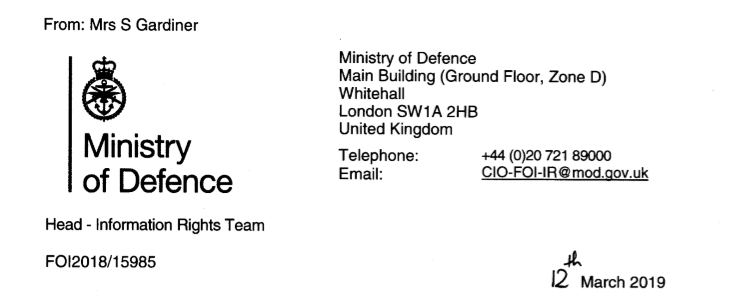
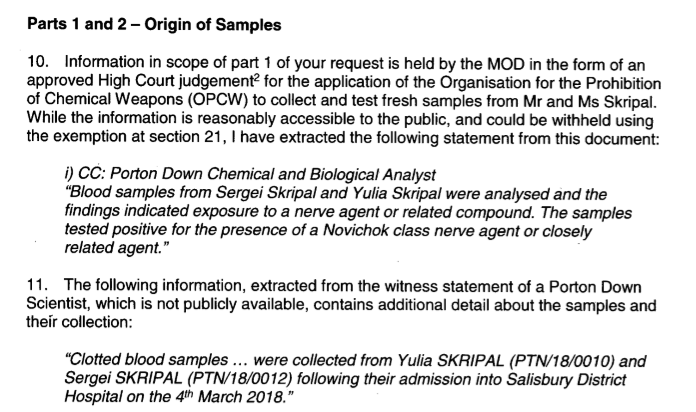
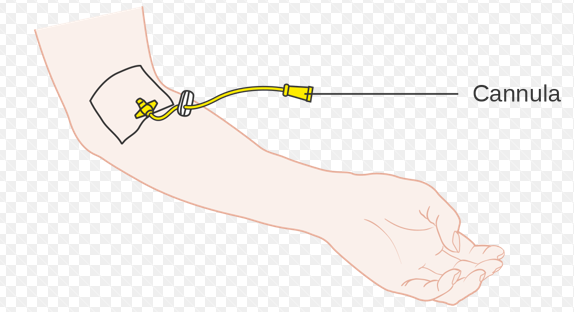
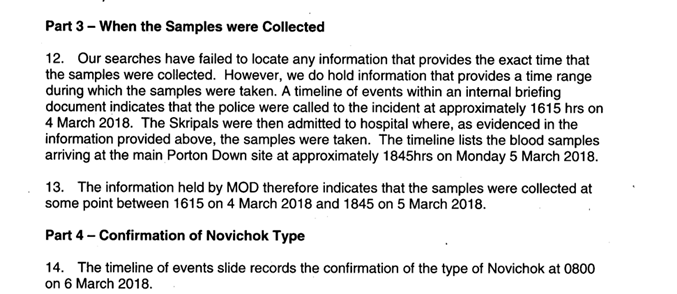
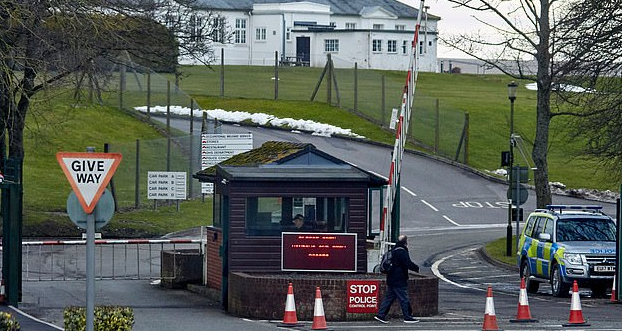
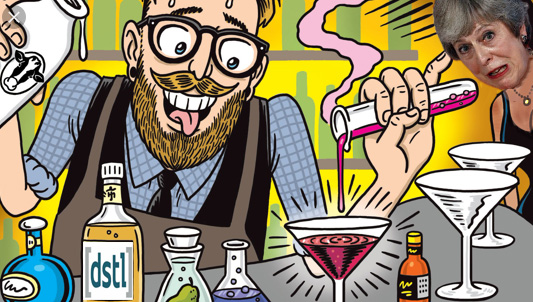
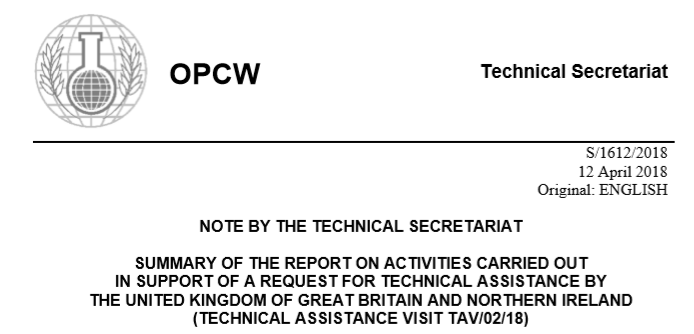
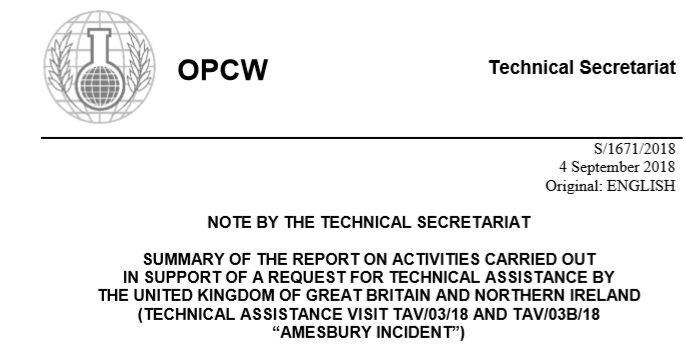

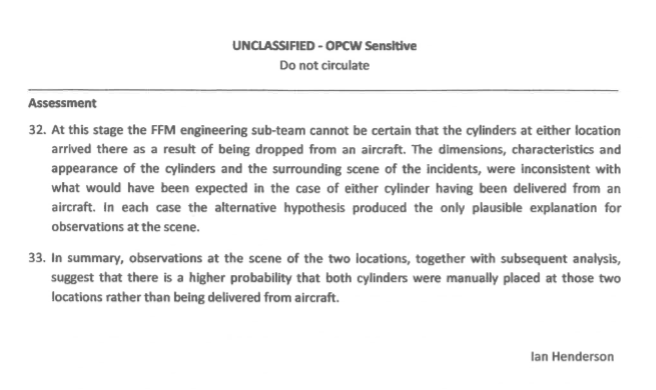
No comments:
Post a Comment